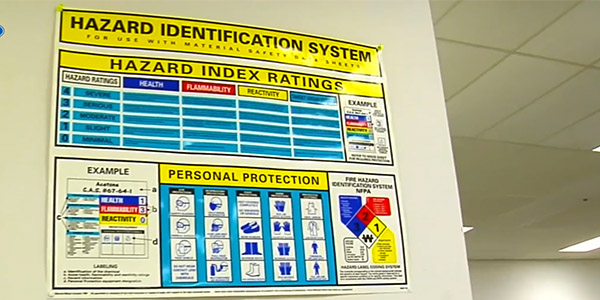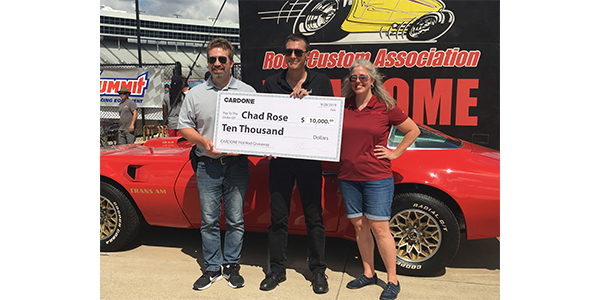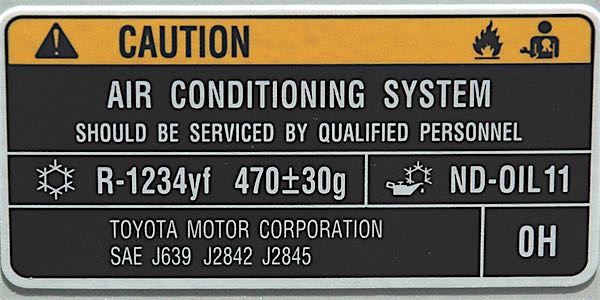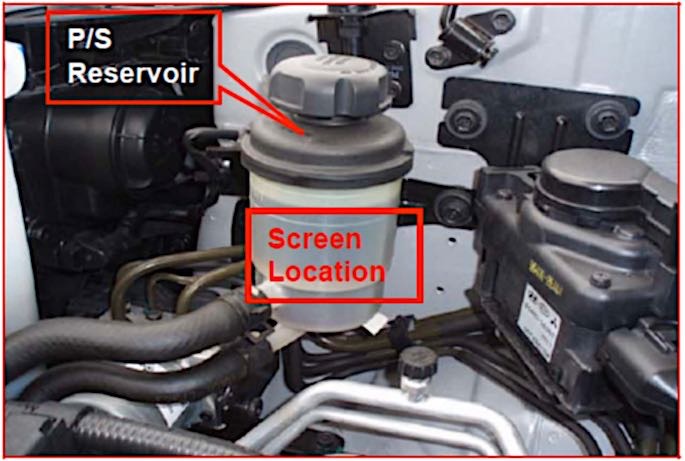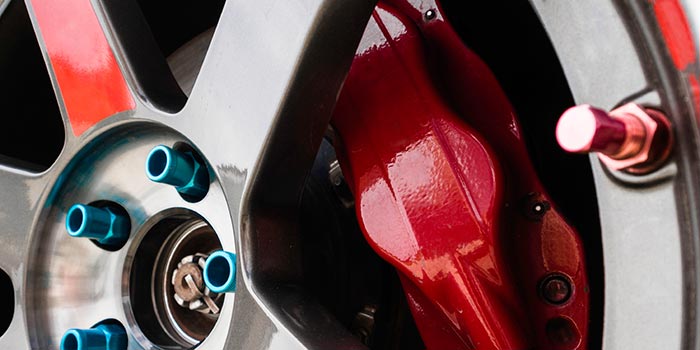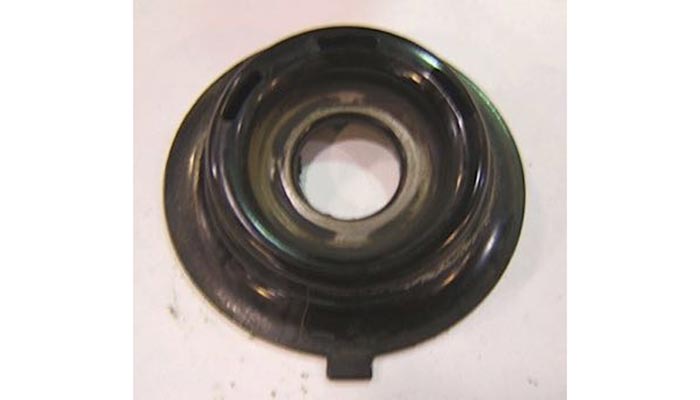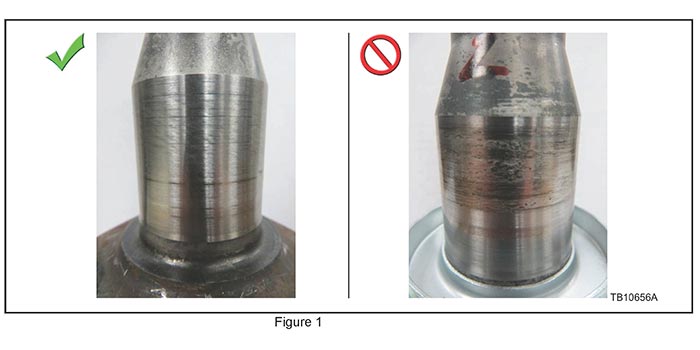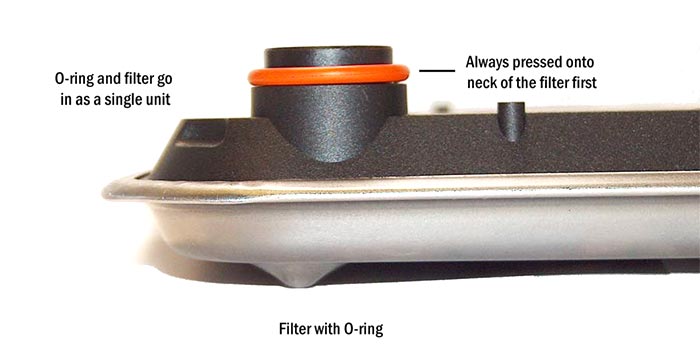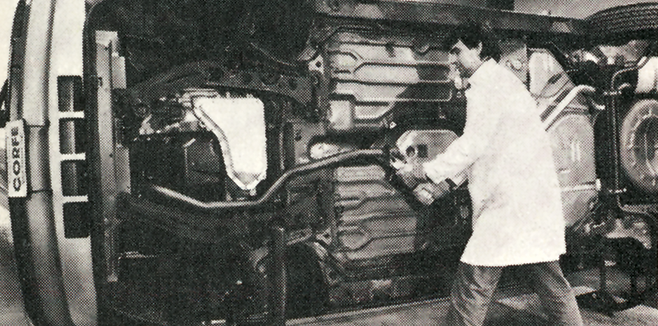According to the U.S Department of Transportation, cooling system failures are the number one cause of vehicle breakdowns on the highway. Many of these breakdowns are attributed to coolant leaks (hoses, radiators, bad radiator caps, etc.), water pump failures, thermostat failures and defective cooling fans.
An industry survey conducted in 2003 by 1-800-Radiator reported that more than 6 million radiators are being replaced each year. The data was compiled from 2,500 counties in all 50 states and included 663 different makes and 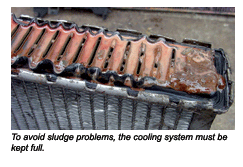 models of vehicles. The survey showed that the vehicles with the highest radiator replacement rates were older Chevy pickup trucks, Ford F-Series pickup trucks, Ford Taurus, Honda Accord, Honda Civic and Toyota Camry. These six models accounted for 16.4% (roughly half a million) of all the radiator failures in the survey. The high percentages do not necessarily mean these vehicles have weak radiators or other cooling issues. The high percentages may be due to the popularity of the vehicles and the fact that there are a lot of them on the road. The survey also concluded that vehicle age and mileage have the greatest impact on radiator life, with hot summer weather causing the most boilovers.
models of vehicles. The survey showed that the vehicles with the highest radiator replacement rates were older Chevy pickup trucks, Ford F-Series pickup trucks, Ford Taurus, Honda Accord, Honda Civic and Toyota Camry. These six models accounted for 16.4% (roughly half a million) of all the radiator failures in the survey. The high percentages do not necessarily mean these vehicles have weak radiators or other cooling issues. The high percentages may be due to the popularity of the vehicles and the fact that there are a lot of them on the road. The survey also concluded that vehicle age and mileage have the greatest impact on radiator life, with hot summer weather causing the most boilovers.
One major radiator supplier said radiators are lasting longer today thanks to extended-life coolants. The typical service life of an original equipment aluminum radiator is upwards of 10 years or more. But radiators can succumb to corrosion or clogging if the cooling system is not maintained.
The Dex-Cool Issue
Mention the word Dex-Cool and some motorists see nothing but red. General Motors has taken a lot of heat about their orange-colored organic acid technology (OAT) long-life coolant clogging radiators. There have been numerous class action law suits against GM over the issue, and a lot of rhetoric and misinformation circulated on the Internet blaming Dex-Cool for a variety of cooling-related issues including radiator clogging, engine damage due to overheating and intake manifold gasket failures.
The latest GM technical service bulletin on this subject (00-06-02-006C) dated May 1, 2006 covers the use of Dex-Cool in all 2007 and earlier GM passenger cars and trucks (including Saturn), 2007 and prior HUMMER vehicles, and 2005-’07 Saab 9-7X.
First and foremost, GM does not approve using any brand of antifreeze that claims to be “Dex-Cool compatible” unless it has been licensed by GM. Approved brands include Dex-Cool coolants made by Chevron, Shell, Prestone, Valvoline, ACDelco and GM Vehicle Care. GM says using a non-approved virgin coolant or recycled coolant may void the cooling system warranty. What’s more, adding non-approved coolants to a vehicle may degrade the integrity of the cooling system making the coolant incapable of lasting five years or 150,000 miles.
In spite of all the controversy over Dex-Cool, GM continues to stand behind their coolant and blames most of the problems that have occurred on cooling system contamination and improper maintenance. GM says the integrity of the coolant is dependent upon the quality of the antifreeze and water. If poor quality water is used with Dex-Cool, it may cause problems. So GM recommends using distilled or de-ionized water with Dex-Cool.
GM also frowns on the use of sealing tablets in the cooling system except in special circumstances. The tablets should not be used as a regular maintenance item after servicing the cooling system. Discoloration of the coolant may occur if too many sealing tablets have been inserted into the cooling system. This can occur if sealing tablets are repeatedly used over the service life of a vehicle.
GM also advises to only use Dex-Cool if a vehicle was originally equipped with Dex-Cool. In other words, don’t switch back to a conventional green coolant or a hybrid OAT coolant that contains silicates.
Mixing conventional green coolant with Dex-Cool will degrade the service life of the coolant from five years/150,000 miles to two years/ 30,000 miles unless the contaminated coolant is removed from the vehicle. GM says the cooling system must be flushed twice immediately after the contamination, and then refilled with a 50/50 mixture of Dex-Cool and clean water to restore the enhanced corrosion protection and extended service life of Dex-Cool.
After five years or 150,000 miles (whichever comes first), the coolant should be changed, preferably using a coolant exchanger. If the vehicle was originally equipped with Dex-Cool and has not had problems with contamination from using non-approved coolants, the service interval will remain the same and should be good for another five years/150,000 miles.
Orange Sludge
So why does the coolant turn to orange sludge in some vehicles? The problem has been blamed on a combination of factors including low coolant level due to a faulty radiator cap or lack of maintenance, oxygen in the cooling system, using water contaminated with minerals or salts, and adding non-approved coolants to the vehicle. Sludging problems, says GM, have not been caused by Dex-Cool breaking down. The sludge is typically iron oxide produced by rust inside the cooling system.
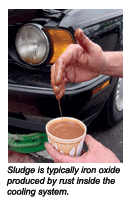 GM has a training video available titled “Understanding Radiator Cap and Cooling System Contamination,” which is free but you do have to pay a small shipping and handling charge. You can request a copy of the video by calling GM’s technical training fulfillment center at 800-393-4831 and ask for part number 2578000100, or kit number RADAPK.
GM has a training video available titled “Understanding Radiator Cap and Cooling System Contamination,” which is free but you do have to pay a small shipping and handling charge. You can request a copy of the video by calling GM’s technical training fulfillment center at 800-393-4831 and ask for part number 2578000100, or kit number RADAPK.
To avoid sludge problems, the cooling system must be kept full. GM advises filling the reservoir bottle to the HOT level when the system is cold. Keeping air out of the system is the key to preventing problems down the road.
Close attention also needs to be paid to the radiator cap. A cap that does not seal properly or is contaminated with rust or dirt can allow coolant loss and air to enter the system. The cap should be pressure tested and replaced if it fails to hold pressure. The GM training video also recommends the OEM “drop-center” style radiator cap with a Stant Model 10230 or 11230 “spring-center” cap. If contamination forms inside the cooling system, the debris tends to gum up the pressure relief valve in the drop-center style caps, especially on vehicles like Blazer trucks where the radiator cap is mounted at an angle. This may prevent the valve from sealing properly, allowing a loss of pressure in the system, coolant loss and additional air contamination that only accelerates corrosion even more.
Nissan has also issued a radiator cap-related service bulletin for its 1999 and later vehicles. TSB #NTB04-018 says overheating and coolant loss problems can be caused by a radiator cap that does not seal properly. The bulletin advises technicians to inspect the gasket on the underside of the cap to see if the gasket is swollen (enlarged) as this can prevent the cap from sealing properly.
Another company that has noticed radiator cap issues is BMW. They actually issued a recall (#98V178000 in August 1998) covering a radiator cap issue on 1995 5 series BMWs. The OEM radiator cap apparently holds too much pressure, and may cause the heater core to burst if the engine overheats. The fix here was to replace the original cap with one that vents at a lower pressure to reduce the risk of passengers being burned by hot coolant blowing out of a ruptured heater core.
Volkswagen had a similar recall on 49,273 Jetta II models. Recall R1995/089 covers the possible leakage of coolant into the passenger compartment due to a burst heater core. Vehicles affected are VIN 1GLW16006 to 1GMW826935, built August 1989-’91. The fix here was to install a bypass valve in the heater core inlet, a non-return valve to the system, and lining the heater box with absorbent foam. A similar recall was also issued for 200,000 1983-’89 Jettas (recall R1995/013).
Wrong Coolant Mix
In some instances, coolant sludge can occur if the coolant contains way too much antifreeze and not enough water, or there is not enough antifreeze in the coolant and corrosion takes over. The recommended coolant mix is almost always 50/50. But if the radiator is drained and refilled without flushing the system, mixing new coolant with old may result in coolant that is too diluted or over-concentrated. Over-diluted coolant (too much water) may prevent the chemical inhibitors from stopping rust, allowing metal surfaces to corrode. GM recommends using a coolant refractometer rather than a hydrometer to check the strength of the coolant.
 Heater Core Failures
Heater Core Failures
GM is not alone when it comes to certain vehicles that have experienced repeat heater core failures. Some of these failures have been blamed on sediment circulating with the coolant causing abrasive wear in the heater core, while other failures have been blamed on electrolysis corrosion. Most of the failures have been with aluminum heater cores, rather than copper/brass cores.
GM tech service bulletin #05-06-02-001 dated Feb. 24, 2005, says aluminum heater core failures in 2005 and earlier cars and light trucks may be due to a variety of causes, including erosion, corrosion or insufficient inhibitor levels in the coolant. Other parts that may also suffer damage include the radiator and water pump. In such instances, the strength and condition of the coolant should be checked prior to installing new parts. If the vehicle’s coolant level is low, has leaked out, or the customer has repeatedly added coolant or water to the system, the cooling system should be completely flushed to remove all possible contaminants.
GM also says to inspect the coolant flow restrictor if the vehicle is equipped with one. Too much coolant flow through the core can cause erosion inside the core.
You also need to check for electrolysis in the cooling system. This test can be performed before or after the system has been repaired using a digital voltmeter set to 12 volts. Attach one test lead to the negative battery post and insert the other test lead into the radiator coolant, making sure the lead does not touch the filler neck or core. A voltage reading over 0.3 volts indicates that stray current is finding its way into the coolant. Electrolysis is often an intermittent condition that occurs when a device or accessory that is mounted to the radiator is energized (such as a poorly grounded electric cooling fan). Broken, missing, loose or corroded ground straps between the engine and chassis may also force electrical currents to flow through the coolant as a ground path.
Ford also has a TSB out on heater core failures, #01-15-6 dated August 6, 2001, which essentially says pretty much the same thing as the GM bulletin. Check the coolant for electrolysis with a voltmeter while the engine is running, flush and replace the coolant if it is contaminated or weak, and check for poor grounded electrical components.
Intake Manifold Coolant Leaks
Here’s another hot issue with technicians and motorists alike: Intake manifold gaskets seem to be failing at an unusually high rate, causing coolant loss and engine overheating. Problem applications according to one aftermarket gasket manufacturer are GM 3.1L, 3.4L, 3.4L, 5.0L and 5.7L engines, and also Ford 3.8L, 4.0L and 4.2L engines.
The aftermarket gasket manufacturer says the OEM plastic/rubber intake manifold gaskets are being attacked by the chemicals in OAT coolants. This causes the OEM gasket materials to soften and leak over time. Leaks can also be caused by galvanic corrosion in the cylinder heads around the coolant ports, and by erosion wear in plastic intake manifolds. The OEM gasket failures typically occur at 30,000 to 80,000 miles, and some OEM gaskets have been replaced more than once.
The aftermarket replacement gaskets for these applications are made with an improved fluoroelastomer material that is not affected by the coolant, and multiple concentric sealing beads provide backup to prevent future leaks.
When the gasket is replaced, the coolant should also be tested for electrolysis with a voltmeter. If electrolysis is present, the coolant should be replaced and the entire system inspected for poor electrical grounds. Corrosion damage around the coolant ports in the cylinder head can be repaired with epoxy to restore the surface.
Some Cooling-Related Recalls
In February 2002, Ford recalled 640,975 1995 Mustang, Taurus and Mercury Sable cars with 3.0L, 3.8L and 5.0L engines because of a problem in the cooling system that could start an underhood fire. The bearings on some cooling fans were seizing causing the fan motor to overheat and melt the electrical connector or catch on fire. Ford’s fix was to install a circuit breaker for the fan motor circuit. If you are servicing a vehicle that has not had this repair, the change should be made. The NHTSA recall campaign number is 01V390000.
In February 2004, Subaru issued a recall on 1999-2002 Legacy, Outback and Forester models with early Phase II 2.5L engines. The problem here is a possible external coolant leak in the cylinder head gaskets. The fix is to add a can of Genuine Subaru Cooling System Conditioner (sealer) to the cooling system. On recalled vehicles that have had this fix, Subaru has extended the OEM warranty on the head gasket to eight years or 100,000 miles, whichever occurs first.

